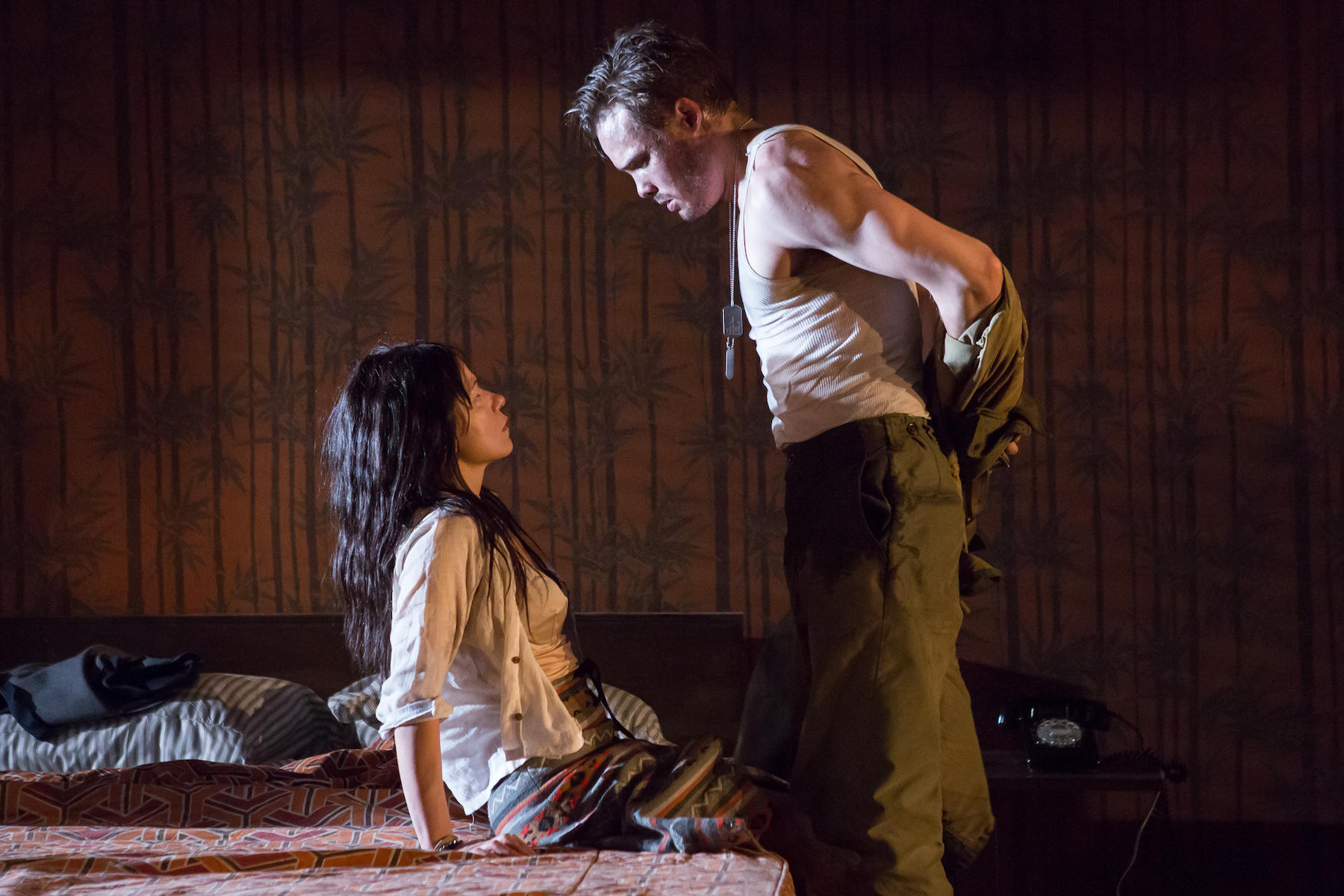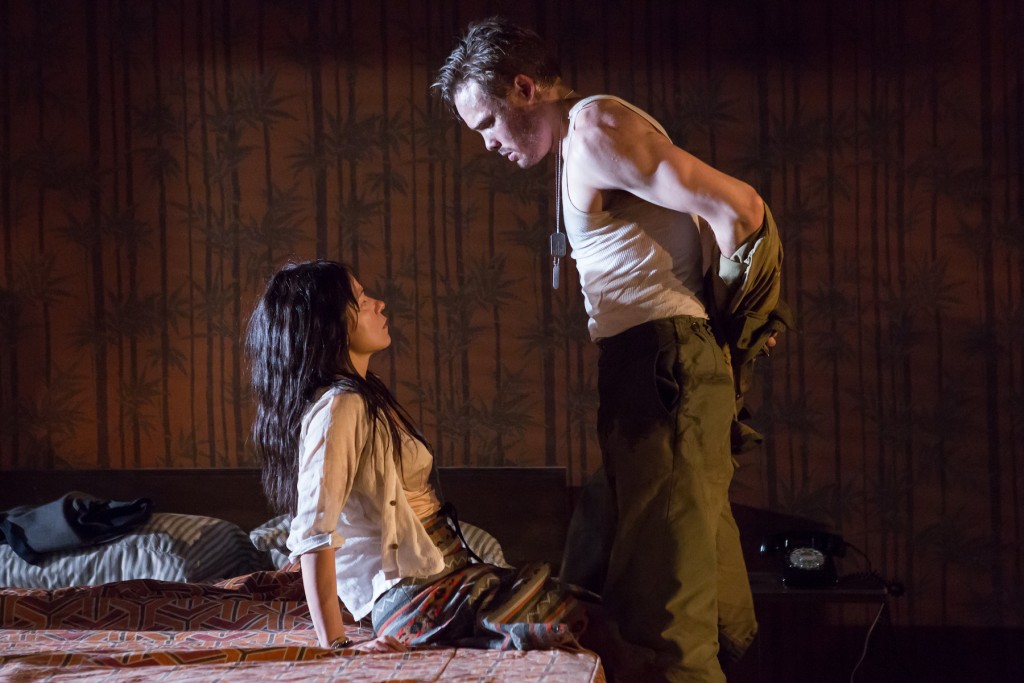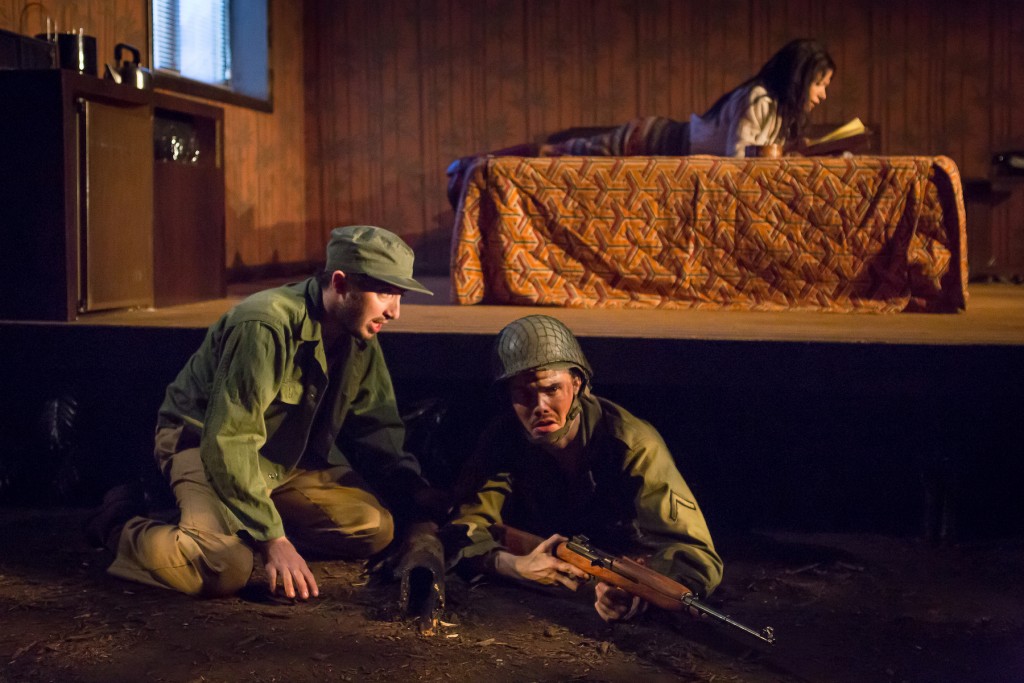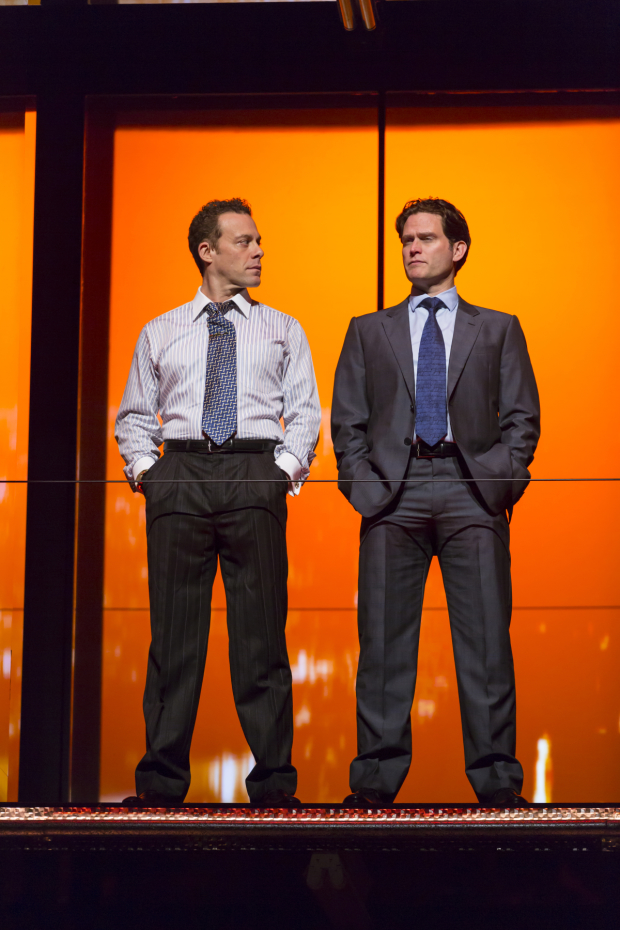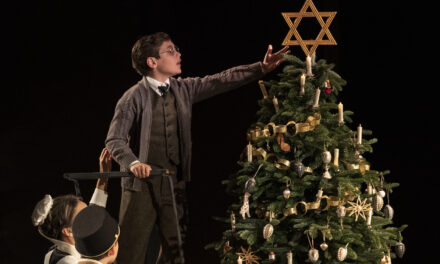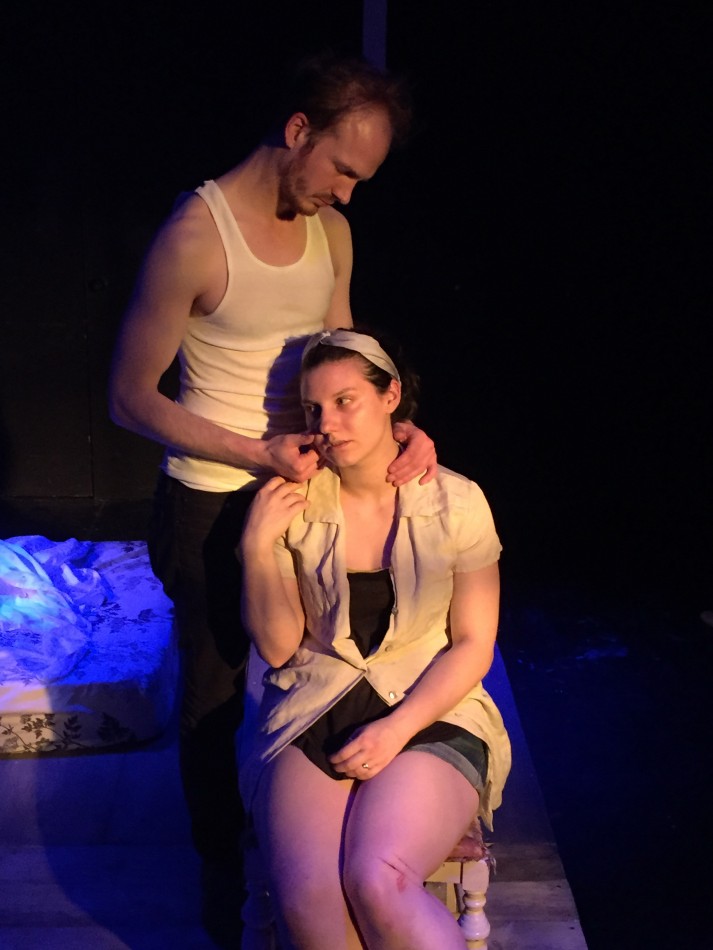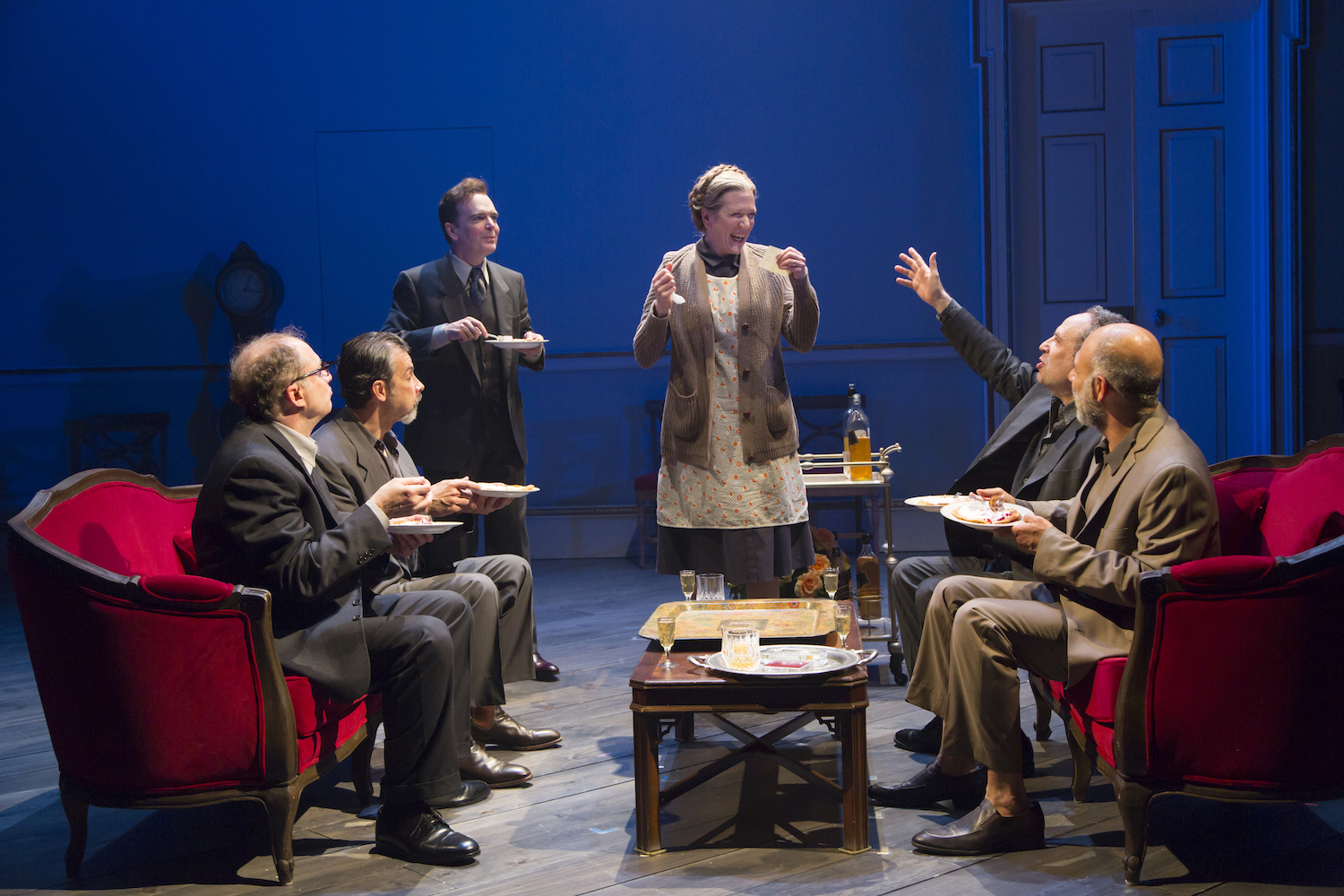by Michael Bracken
Ma-Yi Writers Lab member Hansol Jung should be very happy with the crackerjack production her Among the Dead is receiving from the Ma-Yi Theater Company. Director Ralph B. Peňa and his design team have fashioned a moving dark comedy from Yung’s script. They also pull off a series of sophisticated audio and visual technical feats with style.
The happiness should be mutual. Jung’s script has its issues – it’s nothing if not sprawling – but it’s also willing to take chances and to do so with a sense of humor. Its characters are generally accessible. You can relate to, get close to them. They largely exist in fantasy but their roots are in the earth.
Among the Dead’s greatest fault is that it gives its final payoff short shrift. Early on, a bellboy delivers to Ana (Julienne Hanzelka Kim) a package containing her father’s journal and a scrap of paper with some numbers and Korean writing on it. The paper is a plant, the only plant for what will transpire at the play’s end. But the plant doesn’t get watered. The paper disappears and isn’t heard from again until the final scene, when it seems to come from out of the blue. The audience would have more invested in the story’s outcome if more narrative groundwork were laid.
The play is oddly but sturdily constructed. One scene leads to another. They sometimes seem like they’re going off-track but tend to find their way back center.
Ana reads her father’s journal and, with the help of some “authentic Korean grass from the mountaintops of Fuji,” also provided by the bellboy, gets sucked back in time into Burma during World War II. Her father, Luke (Mickey Theis), is a young man, a soldier in the US Army. She sometimes stands outside the story, reading from her father’s journal, but more often she stands in the shoes of her mother, Number Four, a Korean who had been a “comfort woman” for the Japanese soldiers.
Mostly Number Four is played (to perfection) by Diana Oh. Her tale is another permutation of the Madame Butterfly syndrome. An American serviceman in Asia going home promises his mistress he’ll return for her, never intending to do so. With her limited fluency in English, Number Four speaks in simple phrases, but she’s hardly simple. Oh’s performance respects her complexity, while at the same time sharing her guileless love and unflagging determination.
We later find out the bellboy who keeps showing up in Ana’s hotel room is Jesus (a playful Will Dagger). He comes and goes throughout, a big brother of sorts to the mortal characters. In the course of the night, while civil unrest hits the streets of Seoul, Ana has her own unrest. She goes back and forth from 1944 Burma to 1975 Seoul. She rails against the father she feels she never knew.
Peňa’s staging is dynamic. People come out of walls and beds. A wall disappears as they are viewed through a scrim. The audience, at different times, is bombarded with noise from guns and bombs. Not necessarily pleasant, the explosions, courtesy of sound designer Kenneth Goodwin, make it hard not to pay attention.
The stage configuration at HERE gives scenic designer Reid Thompson plenty of room to work with. His design is grounded in the less-than-five-star hotel room Ana temporarily calls home, with various other locations throughout wartime Burma and, to a lesser extent, Seoul created minimally with help from lighting director Oliver Wason.
Through November 26th at HERE (145 Sixth Avenue, NYC). www.ma-yitheatre.org. 90 minutes with no intermission.
Photos: Hunter Canning


